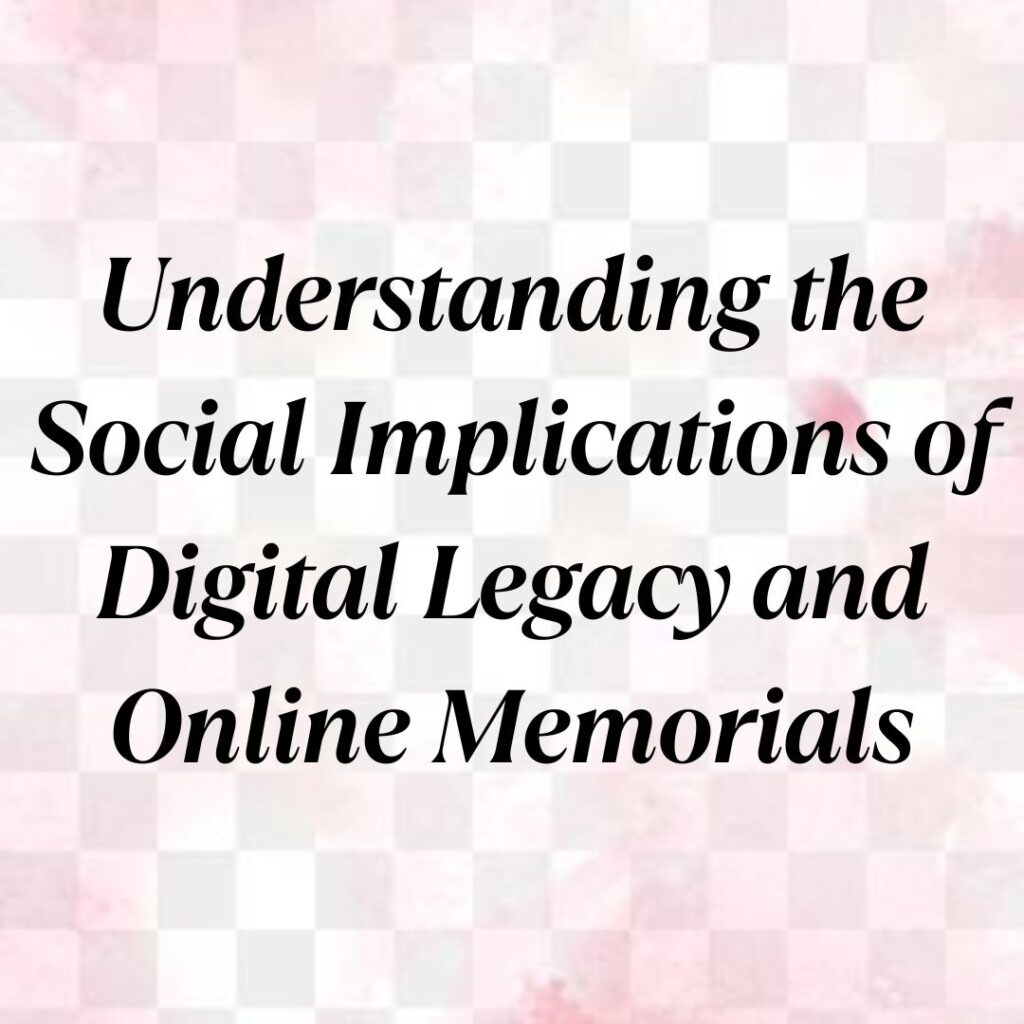In our modern age, where our lives are increasingly intertwined with digital technology, the concept of legacy and memorialization has taken on a new dimension. Unlike previous generations, where memories were primarily preserved in physical artifacts and family stories, today, a significant part of our lives is documented and stored online. This shift has given rise to the notion of digital legacy and online memorials, which not only shape how we remember loved ones but also how we perceive our own lives and identities in the digital realm.
The Evolution of Memory in the Digital Age
Imagine a world where a person’s entire existence — from birth to death — is chronicled online. Birth announcements on social media, childhood photos on cloud storage, career achievements on LinkedIn, and finally, condolences flooding social media feeds when a person passes away. This digital footprint constitutes what we now refer to as digital legacy.
Digital legacy encompasses all digital assets left behind after a person’s death. This includes social media profiles, email accounts, digital photos, videos, blogs, and even cryptocurrencies or online financial accounts. Each piece of digital data holds a fragment of a person’s life story, creating a mosaic of memories that surviving friends and family can access long after the individual has passed away.
Impact on Grieving and Coping Mechanisms
The advent of online memorials has profoundly altered how we grieve and remember. Traditionally, mourning involved physical rituals and tangible symbols of remembrance — gravestones, photo albums, handwritten letters. While these remain significant, online memorials offer a new space for collective mourning and remembrance.
Platforms like Facebook, Instagram, and dedicated memorial websites allow friends and family to share memories, photos, and messages of condolence in real-time. This immediate and widespread outreach can provide comfort and support during a difficult time. For example, after the death of a beloved celebrity or public figure, social media becomes a virtual memorial where fans worldwide share stories and express their grief collectively.
Legal and Ethical Considerations
With the rise of digital legacy comes a host of legal and ethical considerations. Who owns and controls a person’s digital assets after they die? Should family members have the right to access or delete a deceased person’s social media profiles? These questions have sparked debates and prompted legislative efforts worldwide.
Countries like the United States and parts of Europe have begun to enact laws governing digital assets and online memorials. For instance, some states have passed legislation granting executors the authority to manage digital assets, while others have provisions for memorializing or deleting social media accounts posthumously.
Preserving Identity and Memory
One of the most profound implications of digital legacy is its role in preserving identity and memory. Unlike physical artifacts that degrade over time, digital data can persist indefinitely in the vast expanse of the internet. This preservation of digital identity raises questions about how we want to be remembered and how future generations will perceive us based on our digital footprint.
Consider the case of historical figures or prominent individuals whose online presence continues to shape public perception long after they’re gone. Their social media posts, articles, and multimedia content form a curated narrative of their lives, influencing how they are remembered by future generations.
Future Trends and Innovations
Looking ahead, the field of digital legacy and online memorials is poised for further innovation and growth. As technology evolves, so too will the ways in which we preserve, access, and interact with digital memories. Emerging trends include AI-driven chatbots that simulate conversations with deceased loved ones based on their digital footprint, virtual reality environments for immersive memorials, and blockchain technology for securely managing digital assets.
These advancements promise to redefine how we experience loss and commemorate lives in the digital age. However, they also raise ethical dilemmas regarding privacy, authenticity, and the sanctity of memory. As we navigate these uncharted waters, it’s crucial to strike a balance between innovation and sensitivity to ensure that digital legacy serves as a meaningful and respectful tribute to those who have passed away.
Conclusion
In conclusion, the concept of digital legacy and online memorials represents a profound shift in how we remember, grieve, and preserve identity in the digital age. It intertwines our physical lives with our digital personas, creating a complex tapestry of memories that transcend traditional boundaries of time and space.
As we continue to grapple with the implications of digital legacy, it’s essential to approach these issues with empathy, foresight, and a commitment to honoring the memories of those who have come before us. By understanding and embracing the social implications of digital legacy, we can ensure that our digital footprints leave a positive and lasting legacy for generations to come.







